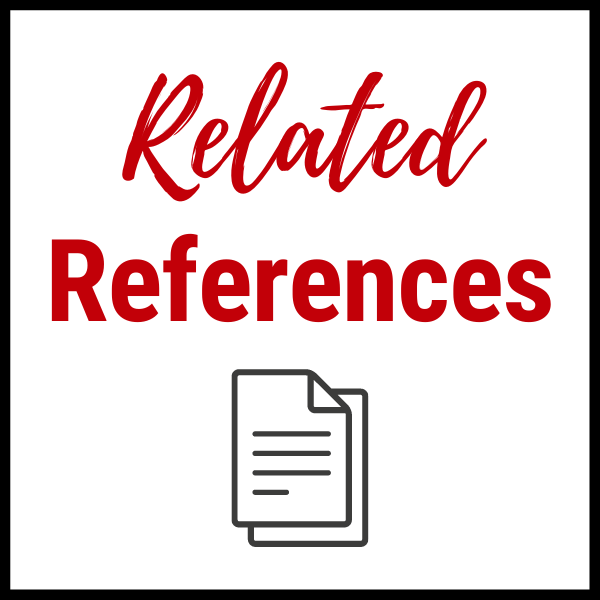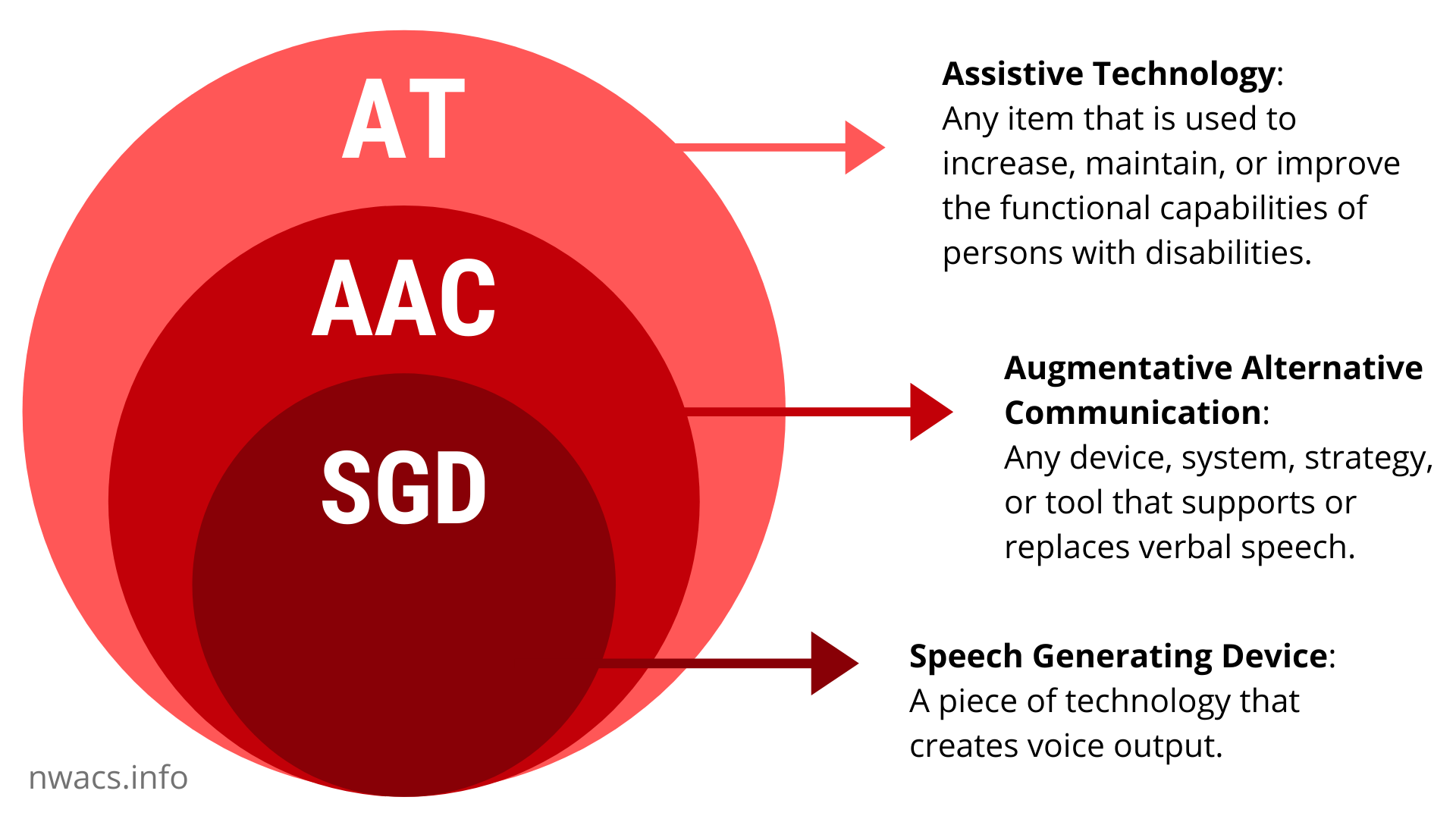⚠️ THIS PAGE IS IN DEVELOPMENT ⚠️ Thank you for your patience as we gather input from AAC Users ⚠️
For AAC Users
We recognize that NWACS currently has little content specifically for AAC users. Historically, NWACS has focused on being a resource for people supporting and interacting with AAC users. NWACS is evolving as an organization. We recognize that AAC users are often left out, overlooked, or otherwise not fully included in many aspects of life. NWACS is working to be more inclusive. We ask for your patience as we intentionally and thoughtfully redesign our website to be more inclusive and accessible.
These resources are for educational purposes. This is not an exhaustive list. Inclusion does not signify endorsement. Use of any information provided on this website is at your own risk, for which NWACS shall not be held liable.
As is the case when talking about any group of people, AAC users are diverse. The words AAC users prefer to use (and have used) to talk about them as AAC users vary too. The term ‘AAC user’ encompasses:
nonverbal/nonspeaking people
semi-verbal/semi-speaking people or minimally verbal/speaking people
people who use spoken language for some of their communication
full-time AAC users
part-time AAC users
people who use AAC for a period of time, but not their entire lives
people who started using AAC in childhood
people who started using AAC in adulthood
people who primarily use lite-tech communication tools
people who primarily use high-tech communication tools
people who use non-traditional tools in creative ways to communicate
people who access communication through partner-assisted methods
people who communicate by co-constructing messages with communication partners
people who are learning to use their AAC system and are developing their communication skills
people who can use their AAC system to communicate anything they want to anyone they want at any time
and more
We recognize that there are people who could benefit from AAC but do not (yet) have access to it. And that there are AAC users with communication systems that are not a good fit for their needs.
NWACS Resources to Explore:
AAC / AT Companies - a list of companies that sell products to support communication
AAC / AT-related conferences, courses, and webinars - a collection of sources to find AAC/AT-related conferences, courses, and webinars
AAC & Consent, Safety, Dignity - a collection of information and resources about the prevention of abuse, harm, and infantilization
AAC Funding Sources - an overview of ways to fund AAC systems, including a list of organizations that offer grants and scholarships for AAC
AAC and Literacy - a collection of information and resources about literacy development and instruction
Communication Bill of Rights - a collection of articles from the NWACS blog related to the Communication Bill of Rights
Emergency Preparedness - a collection of information and resources about preparing for emergencies and disasters
Resources for Training Communication Partners - a collection of resources for training communication partners
Ways to Borrow AAC/AT Equipment - a collection of ways to loan AAC/AT equipment
Related References:
We have included direct links to view open access items.
AAC Compendium (aka Phoenix’s giant AAC Resource List) by Phoenix
Donaldson, A. L., Zisk, A. H., Eddy, B., corbin, E., Ugianskis, M., Ford, E., & Strickland, O. (2023). Autistic Communication: A Survey of School-Based Professionals. Perspectives of the ASHA Special Interest Groups, 8(6), 1248-1264.
Donaldson, A. L., corbin, E., Zisk, A. H., & Eddy, B. (2023). Promotion of communication access, choice, and agency for autistic students. Language, Speech, and Hearing Services in Schools, 54(1), 140-155.
Donaldson, A. L., corbin, E., & McCoy, J. (2021). "Everyone deserves AAC": Preliminary study of the experiences of speaking autistic adults who use augmentative and alternative communication. Perspectives of the ASHA Special Interest Groups, 6(2), 315-326. DOI:10.1044/2021_PERSP-20-00220
Hillary, A. (2019). Am I the curriculum?. Curriculum Inquiry, 49(4), 373-386.
Hillary, A., & Harvey, S. (2018). Teaching with Augmentative and Alternative Communication. International perspectives on teaching with disability: Overcoming obstacles and enriching lives, 219-234.
How to talk about AAC and AAC users (according to them) by Alyssa Hillary Zisk and Lily Konyn on the AssistiveWare blog (2022)
Koerner, S. M., Glaser, S., & Kropkowski, K. (2023). Perspectives of Part-Time Augmentative and Alternative Communication Use in Adults and Implications for Pediatric Service Delivery. Perspectives of the ASHA Special Interest Groups, 1-14.
Kudryashov, L. (2021). Participatory design of augmentative and alternative communication (AAC) technology with autistic adults (Doctoral dissertation).
Zisk, A. H., & Dalton, E. (2019). Augmentative and alternative communication for speaking autistic adults: Overview and recommendations. Autism in Adulthood, 1(2), 93-100.
*Note: Alyssa Hillary Zisk will send copies of any of their work to anyone who emails and asks. Email them at: alyssazisk@uri.edu
Selections From the NWACS Blog:
Get Connected!
Join the NWACS Family AAC Group on Facebook - based in Washington State; centers the family perspective on AAC, however, other AAC stakeholders are welcome in the spirit of collaboration and shared learning
Join the NWACS NAACHO: Networking for AAC and Hangout group on Facebook - based in Washington State; centers professional collaboration, networking, and supporting each other; all AAC stakeholders are welcome
Watch the NWACS Outreach Committee page for upcoming events
Watch the AAC Learning Network page for upcoming events
explore past NWACS Evening Seminars (2022-2023)
explore past AAC Learning Networks (2024 -)
Subscribe to our email list (there is a form at the bottom of this page to subscribe)
Watch for information on the annual NWACS Fall Conference
Information for People New to AAC
What is AAC? (5-min video)
Understanding the Relationship Between AT, AAC, and SGDs (click to read blog post)
Handouts for Getting Started with AAC:





